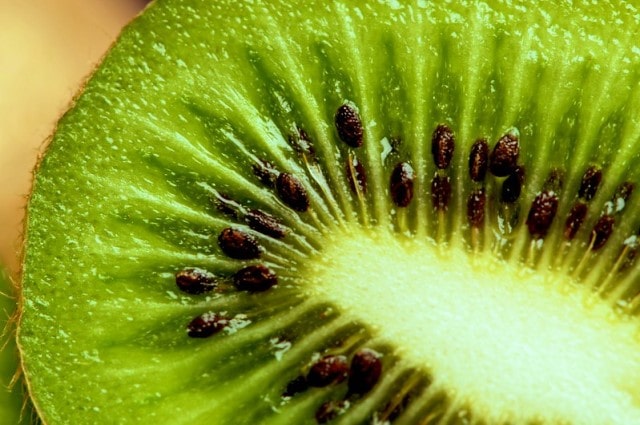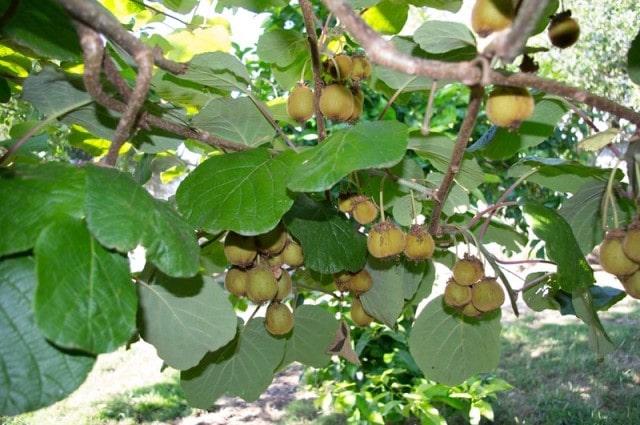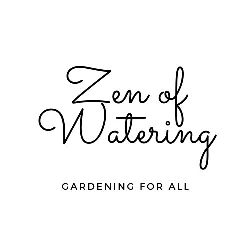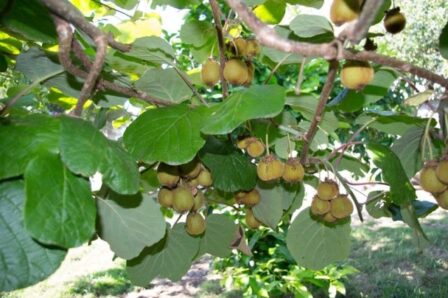Do you know that you can grow kiwi from the fruit you bought from the store? With little patience, you will enjoy the process of growing fruit in your house garden. Growing kiwi from seed takes 3 to 5 years. Although it is not a complicated process, you will have to wait for a while before you can take a bite of your homegrown fruit. There will be several things to be happy about before the first harvest.
If you have ever seen a kiwi vine, you will surely fawn over its beauty. Some readers may have envisioned a kiwi tree, but it is a vining plant. These vines have soft and heart-shaped leaves. These bear white flowers during the spring, which then fertilize to become the kiwi fruit.

Kiwi seed germination temperature
The kiwi plant lends a combination of helpful and ornamental qualities due to the presence of edible fruit and fragrant flowers. You can propagate the vines grown for the fruit from cuttings. It preserves their favorable fruiting traits. You can also grow the same plant from the seeds. On exposure to warm temperature, the germination process of seeds fastens. To increase the germination speed, stratify the seeds in cold before sowing them. The following points cover the germination instructions for the kiwi plant.
- Gather kiwi seeds from a fruit that has ripened to a solid light brown color with a fuzzy skin in early autumn. Do not take the fruit that has fallen on the ground. Instead, pluck one from the kiwi vine.
- Take a large fruit processor or blender and place the fruit inside. Macerate the fruit until no large chunks of flesh are left. Use a sieve to strain the fruit slurry.
- Collect the seeds caught in the sieve. Take a bowl filled with water and swirl the seeds to clean them. Take a moist towel to wrap the seeds and put that towel in a plastic bag.
- To cold stratify the kiwi seeds, store the plastic bag in your refrigerator for at least three weeks. Wet towel from time to time so that it never fully dries during the process.
- Fill a pot or a tray with potting soil and leave the top 1 or 2 inches empty. Spread the kiwi seeds on the soil surface without worrying about equal spacing. Put another layer of soil above the seeds about 1/8th inch thick.
- Wet the soil a little so that it settles on the seeds. Move the pot to a sheltered but bright place. Do not expose it to direct afternoon sun.
- Place the pot on a warming mat at about 75 F temperature. Put a propagation dome over it. Every day, check the moisture level of the soil twice. Whenever the soil feels dry up to 1 inch of the surface, water it.
- After two to three weeks, watch for germination. Adjust the temperature of the warming mat to 70 F. Increase the duration for which you have to remove the propagation dome every day. Acclimation of the kiwi seeds to external conditions is also significant.
Take 4-inch pots filled with soil and transplant the kiwi seedlings individually. The pots must have drainage holes at the base. Kiwi needs light shade until it attains a height of 3 to 5 inches. Thus, either prepare a permanent grafting or transplant them into a plant bed.
MORE POSTS: How to grow jalapenos from store-bought peppers?
Kiwi growing temperature
People think that kiwi grows only in areas of Australia. Although it is grown best in subtropical conditions, various types of kiwi can grow almost everywhere. You can choose from 50 different types of kiwi. You will need male and female vines to produce the fruit because not all varieties are self-pollinating.
To know the best place for kiwi vines in your area, find a spot getting sufficient sunlight. Each vine must be at a distance of 10 to 12 feet from each other to ensure plenty of space to grow and expand. Access to water must be easy as well. Kiwi vines need plenty of water until they grow into healthy plants with strong roots. Since they are climbers, they need the support of sturdy trellis to help them grow. Some kiwi vines can grow 40 feet tall. These are similar to growing grape or rose climbers. Use strings to tie the vines to the support system. Prune the branches that grow too wild to control their growth.
Make sure to use high-quality and heavy-duty pruning shears. Pruning is a vital process while growing kiwi vines, and you will have to perform it thrice every year. They need to be pruned first in winters when these vines are dormant. It is also the best time to remove dead and crossed vines. Never cut the vines that are a year old because they will produce fruit for the next season. To keep the plant focused on fruiting, cut till the eighth node. Cut the arching ends where you can see the fruits growing. Aching ends will lower the number of fruits by consuming excess energy. So, you must prune them.
Kiwi plant prefers heavy mulching. For doing the trick, a 3-inch layer of chopped leaves is more than enough. All you have to do is keep it back from the vines at a distance of about 3 inches. Mulching too close to the vine will expose it to the risk of rotting and other diseases. If the fruits have not ripened despite the approaching frost, go on to harvest them. They will be ripe even on your kitchen counter. This non-ideal case is better than losing the entire harvest to an early frost.
How to grow kiwi fruit in a container?
Kiwi plants need warm conditions to grow and produce fruits. You can grow kiwi in your house hassle-free if you live in a warm area that does not experience heavy frost. The best way to grow kiwi is in pots. You no longer have to purchase it from a supermarket. The home-grown kiwis are smaller and sweeter than those purchased from the markets. They grow in clusters and are called baby kiwis. You can eat them whole, and they can survive even in cold weather. Thus, they are way healthier than their store counterparts. Follow these instructions to grow kiwi in a container.
- To start, purchase a kiwi nursery container. Getting a kiwi from the fruit is much easier and guaranteed than getting one from the seeds. However, growing kiwi in a container from seeds also requires the same procedure.
- Put the pot or container you want to grow kiwi next to a trellis so it can climb up. You can also use a stake similar to the one for tomato plants.
- Fill the container with potting soil up to two-thirds of its height. Also, add fertilizer mix.
- Take care that you plant the kiwi in the center of the container.
- To produce fruits, you need both male and female vines. Put male and female vines on each side of the central plant. It is particularly significant for the hardy type.
- Continue filling the container with potting mix until it fills up. Just leave the top 2 two inches empty for water.
- Next to the trellis, put a stake. It will facilitate the reach and growth of the vines.

How to take care of the kiwi plants?
Taking care of kiwi plants and producing fruit is not a complicated task. You need to be patient, as it will take 3 to 4 years before you can yield the first harvest. Never worry, as there are numerous other things to cherish during the process. The fragrant flowers, for example. Take care of the vines well, and you can expect a good harvest.
Pruning is an inescapable part of the process of growing kiwi vines. During the growing season, you might have to prune the plant four times. To start, cut the new growth to half once every few weeks. Do this with every new branch. You should limit the male vines growth to flowers. They must be grown enough, so that they can pollinate and not more than that.
Before the growth begins, fertilize the plants. You must add the fertilizers two to three times during the first half of the growing season. Never wait for the kiwi fruit to be ripe completely before you pluck them. Pluck them off the vines when they are mature. They will ripe on their own when off the plants. The following are the growth conditions required by kiwi plants that you must take care of:
- Climate
Kiwi grows best in subtropical areas. Hardy kiwis remain dormant and can survive even at -25 degrees C. There are several varieties of kiwi that can grow in every state. So there is no need to worry if you do not live in a subtropical region. You can still grow kiwi and enjoy it as a homegrown fruit. When given proper care, it can thrive well in any climatic conditions. Put the pots at the correct spot in your house, such they get adequate sunshine. Protect them from exposure to direct sunlight. Do not forget kiwi is a vine and thus needs proper support to climb up. Attach a climbing pole or trellis to get support.
- Sun
Kiwi needs proper sunlight to grow well, just like any other plant. If you are growing kiwi in a cool place, place the pots near a west or south-facing wall or window. Place the kiwi pot in full sun if you live in warmer climates. Wherever you live, you must avoid direct exposure to the afternoon sun as it can burn the leaves or even flowers of the plant. Take the pots to a shady place in the afternoon.
- Soil
Choosing the correct soil for your potted plants is very important. We advise you to purchase a soil-less potting mix from the market. It must contain at least one-third organic material. Ensure that the soil in the potting mix is well-draining because kiwi vines cannot survive standing water. The plant roots cannot breathe in standing water and eventually die, destroying the entire plant.
- Fertilizers
Fertilizers play a vital role in determining how well the plant grows. Plants grown in pots require more fertilizers, as they are away from the natural environment. So artificial fertilizers fill this gap and give them all the necessary nutrients. Each plant has different nutrient requirements. But fertilizers are rich in particular nutrients required by the kiwi plant. Mulch the soil with rotted organic matter during the late winters. Always buy organic and well-balanced fertilizer. The best time to add fertilizers is during the spring season when new growth emerges.
- Water
Kiwi seeds need a lot of water while they are germinating. The tray should not be dry, so the seeds germinate well. After that, limit the water you give because kiwi plants cannot survive in standing water. The best way to know when to water the plants is by checking the soil. If the soil feels dry to the touch, water it. If it feels wet when you touch it, do not water it.
- Spacing
The minimum space between two plants must be at least 3mm. The more, the better. Remember that these are climbers, and will branch out in all directions as they grow. They, thus, need proper space for the growth of new branches. You must maintain the rows at 3mm with a row gap of 3mm. Other plants that you can grow with kiwi are marigold, marjoram, and lemon balm. You must be careful while choosing the companions as kiwi is a dominant plant and need some support to climb on. It will make sure that it does not spread around the pot.
- Harvest
Pluck the kiwi fruit before the first frost, even if they have not ripened. Let them ripe indoors. In subtropical and tropical regions, allow the fruit to ripe on the vine naturally. Pick them off the plants when they are of the right color and size, the same that you will see in a grocery store. Pick them off the vines when they are mature and let them ripe inside. Harvest them on time, or else frost will destroy your harvest.
- Diseases and pests
Kiwi vines are prone to oak root fungus, bacterial blossom light, and root rot. Never keep the roots too wet to protect them from diseases. Kiwi plants can get affected by bleeding cancer disease in cold winters.
What variety of kiwi is the best for you?
There are four kiwi plant categories, namely, hardy, fuzzy, arctic, and hairless. Certain varieties grow only in the subtropical area and will die when the temperature falls below 10 degrees F. But some survive in a temperature as low as -30 degrees F. Choose a type ideal for the climatic conditions you live in. The choice also depends on your size and taste preference.
Grow fuzzy kiwi if you live in a warm and wet climate. Examples are Hayward, Meander, Blake, and Saanichton. The arctic kiwi types can be grown in frigid zones. Some examples that can withstand harsh conditions are arctic beauty, krupnoplandnaya, and Pautske. Varieties like Geneva, Issai, Ananasnaya, and Dumbarton oaks are excellent options for areas that have cold winters accompanied by a short growing season.
End Thoughts
Growing kiwis is not a complicated process. With proper care and attention, you can enjoy this fruit at home, and there will be no need to purchase it from groceries. But, along with care, you also need to be very patient as it will take 3 to 4 years before you get your first harvest. Pruning should be done three to four times in a growing season. Now that you know how to grow kiwi from store-bought fruit, we wish you luck in having an excellent time creating it.

